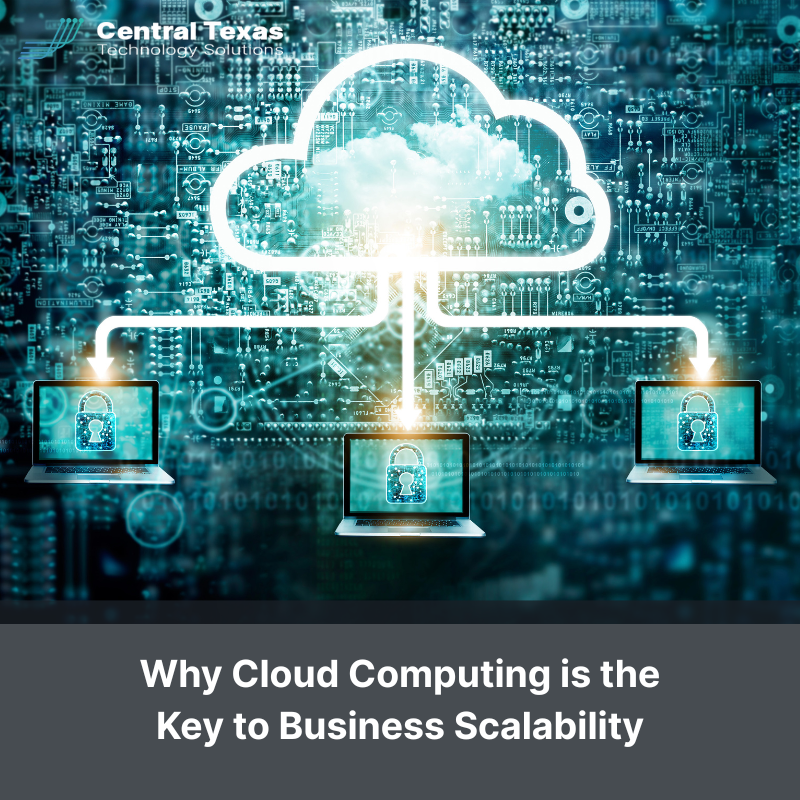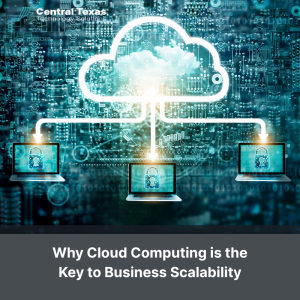
 In today’s fast-paced business environment, companies need to grow without constantly reinvesting in expensive infrastructure or overburdening their internal teams. That’s where cloud computing comes in. Once considered a high-tech luxury, cloud services have become the backbone of agile, scalable businesses across every major industry in Central Texas.
In today’s fast-paced business environment, companies need to grow without constantly reinvesting in expensive infrastructure or overburdening their internal teams. That’s where cloud computing comes in. Once considered a high-tech luxury, cloud services have become the backbone of agile, scalable businesses across every major industry in Central Texas.
For business leaders in Healthcare, Legal, Construction, Manufacturing, and Nonprofits, the ability to scale operations efficiently can mean the difference between falling behind and pulling ahead.
What Is Cloud Computing Scalability?
Cloud computing scalability refers to a system’s ability to automatically adjust its resources to match your business’s changing demands.
- Experiencing a surge in website traffic? The cloud scales up instantly.
- Navigating a slower season? It scales back automatically.
- Hiring new employees or launching a new location? The cloud grows with you, without major capital expenditures.
This flexibility eliminates the need for manual intervention or guesswork. Think of it like a smart thermostat that adjusts the temperature before you even realize you’re uncomfortable.
Save Money With Smarter Infrastructure
One of the most immediate benefits of cloud computing is cost efficiency. Traditional IT models required businesses to invest in hardware and software that often sat unused for much of the year. With the cloud:
- You only pay for what you use.
- There’s no need to overbuy “just in case.”
- Resources adjust automatically to match demand.
For organizations watching the bottom line, this elasticity keeps spending predictable and aligned with actual business activity.
Auto-Scaling Frees Up Your IT Team
Your IT team has bigger priorities than chasing down system overloads. With auto-scaling, cloud platforms automatically respond to real-time usage needs without human involvement.
Here’s how it plays out:
- A nonprofit launches a viral fundraising campaign.
- Traffic spikes dramatically.
- Instead of freezing or failing, your systems scale smoothly to meet demand.
Then, once traffic returns to normal, resources scale down again—saving money and keeping your team focused on strategic initiatives instead of firefighting.
Keep Your Business Online With Load Balancing and Multi-Cloud Strategies
High availability isn’t a luxury. It’s a necessity. Load balancing is a key feature of cloud scalability that keeps websites and applications running smoothly by spreading traffic across multiple servers.
But smart businesses don’t stop there. Relying on a single cloud provider leaves you vulnerable to outages and downtime.
That’s why many companies now use multi-cloud architecture:
- Combine the best features of multiple providers (like AWS, Azure, and Google Cloud).
- Stay operational even if one provider experiences issues.
- Improve security and disaster recovery options.
For industries like healthcare or legal services, where uptime is critical and compliance is strict, this level of resilience is non-negotiable.
Access Resources When You Need Them Most
Scalability isn’t just about convenience—it’s about performance at the speed of business.
Cloud computing lets you:
- Analyze past usage to plan for future demand.
- Add computing power or storage in minutes, not days.
- Support time-sensitive campaigns, seasonal spikes, or sudden expansion.
Whether you’re managing patient records, legal filings, or supply chains, quick access to extra capacity ensures you never miss a beat.
Grow Smarter With Cloud Computing Scalability
Adopting scalable cloud infrastructure isn’t just an IT decision—it’s a strategic growth move. It empowers your business to:
- React faster to market changes.
- Serve customers more reliably.
- Expand without friction or delay.
If you’re in the business of growth—and what business isn’t—then cloud computing is no longer optional. It’s essential.
FAQs About Cloud Computing
What’s the difference between cloud scalability and cloud elasticity?
Scalability refers to a system’s long-term ability to handle growth, whereas elasticity focuses on automatically adjusting resources in real-time based on current demand.
Is multi-cloud worth the complexity for small to mid-sized businesses?
Yes. Even for smaller organizations, spreading workloads across multiple providers increases uptime, enhances security, and provides flexibility in pricing and services.
How do I know if my current cloud setup is truly scalable?
Look for auto-scaling capabilities, load balancing, cost efficiency during high usage, and minimal manual intervention during traffic spikes or periods of business growth.
Contact CTTS today for IT support and managed services in Austin, TX. Let us handle your IT so you can focus on growing your business. Visit CTTSonline.com or call us at (512) 388-5559 to get started!
